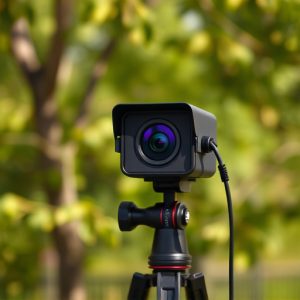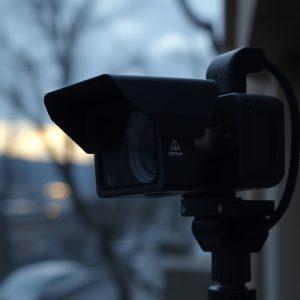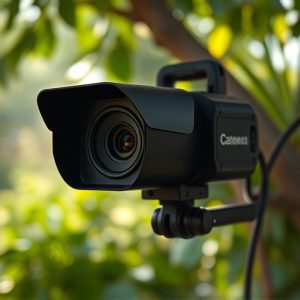Spy Cameras & Cloud Storage: Transforming Home Objects into Surveillance Tools
Miniature spy cameras with cloud storage have revolutionized home security with advanced features li…….
Miniature spy cameras with cloud storage have revolutionized home security with advanced features like motion detection, night vision, and real-time footage access via internet. Their discreet design, high-resolution imaging, and cloud backup capabilities make them popular for homeowners seeking peace of mind. However, the hidden nature of these devices raises ethical concerns about privacy and civil liberties, necessitating thoughtful regulations as technology advances. Integrating cloud storage enhances security by providing remote access, backup, and organization of footage, exemplifying modern innovations that cater to both enhanced security and convenience.
“Uncover the hidden world of miniature surveillance devices transforming our living spaces. From everyday home objects to advanced tech, we explore how ‘spy cameras’ are evolving. This article delves into the technology behind these tiny yet powerful tools, their growing popularity, and the ethical debates they spark.
Discover how cloud storage integration enhances security and accessibility, as we examine common items becoming surveillance assets. We also gaze into the future, considering privacy implications, legalities, and potential use cases of spy cameras with cloud storage.”
- Understanding Miniature Surveillance Devices: Unveiling the Technology
- The Rise of Spy Cameras: Benefits and Ethical Considerations
- Cloud Storage Integration: Enhancing Security and Accessibility
- Common Home Objects Turned Into Surveillance Tools
- Future Implications: Privacy, Legalities, and Potential Use Cases
Understanding Miniature Surveillance Devices: Unveiling the Technology
Miniature surveillance devices, often concealed within everyday home objects, represent a significant advancement in technology. These tiny cameras, sometimes no bigger than a button or a coin, are equipped with advanced features like motion detection and night vision. One notable aspect is their ability to transmit footage directly to cloud storage, ensuring remote access from anywhere with an internet connection. This integration with cloud services not only facilitates easy monitoring but also provides a secure backup solution, making them a popular choice for home security enthusiasts and professionals alike.
The technology behind these devices combines miniaturization, high-resolution imaging, and sophisticated software algorithms. They can be discreetly installed in various items, such as light bulbs, power outlets, or even decorative figurines, making surveillance almost invisible. This evolution of spy cameras with cloud storage has transformed the way we perceive privacy and security, offering unprecedented convenience and peace of mind.
The Rise of Spy Cameras: Benefits and Ethical Considerations
The proliferation of spy cameras, especially those integrated into everyday home objects, marks a significant shift in surveillance technology. These miniature devices, often equipped with cloud storage capabilities, offer unprecedented convenience and peace of mind for homeowners. With real-time access to video feeds from anywhere with an internet connection, users can monitor their properties remotely, enhancing security and providing valuable evidence in case of any suspicious activities. Cloud storage further streamlines the process by allowing easy backup and retrieval of footage, ensuring that critical moments are not lost.
However, the rise of spy cameras also raises ethical concerns. Privacy advocates argue that the omnipresence of these devices could lead to a chilling effect on civil liberties and personal freedom. The ease of installation and hidden nature of spy cameras can facilitate invasive surveillance, raising questions about who has access to the recorded data and how it is used. Balancing the benefits of enhanced security with the right to privacy remains a complex challenge in an era where technology advances rapidly, demanding thoughtful regulations and public discourse.
Cloud Storage Integration: Enhancing Security and Accessibility
The integration of cloud storage in miniature surveillance devices, like spy cameras, significantly enhances both security and accessibility. By uploading footage captured by these tiny yet powerful cameras to secure cloud servers, users can remotely access live feeds or recorded videos from virtually anywhere with an internet connection. This feature is particularly useful for homeowners who want to monitor their properties while away, ensuring peace of mind and enabling them to address any potential issues promptly.
Moreover, cloud storage provides an additional layer of security through backup and encryption. In the event of device loss or malfunction, users can retrieve their footage from the cloud, ensuring no critical data is left vulnerable. The ability to integrate with popular cloud storage services also simplifies management, allowing users to organize and search through recorded videos efficiently. This technological advancement in spy camera functionality exemplifies how modern innovations cater to enhanced home security while offering unprecedented convenience.
Common Home Objects Turned Into Surveillance Tools
In today’s digital era, everyday home objects are evolving into sophisticated surveillance tools, offering unprecedented levels of monitoring and peace of mind. From smart light bulbs equipped with hidden cameras to seemingly innocuous-looking power outlets, these miniature surveillance devices are integrated seamlessly into our living spaces. One popular choice is the spy camera with cloud storage, a discrete yet powerful tool that allows users to remotely access live feeds or recorded footage from their homes.
These compact cameras can be easily concealed within everyday items like picture frames, potted plants, and even children’s toys, making them nearly invisible to potential intruders. With cloud storage capabilities, users can review footage at any time, ensuring a comprehensive security network. This innovative use of technology transforms ordinary household items into advanced surveillance systems, providing an extra layer of protection for homes and businesses alike.
Future Implications: Privacy, Legalities, and Potential Use Cases
The integration of miniature surveillance devices into everyday home objects raises significant questions about privacy, legal boundaries, and potential applications. As technology advances, the emergence of tiny spy cameras equipped with cloud storage capabilities could transform how we perceive domestic security and surveillance. On one hand, these innovative devices might offer enhanced peace of mind for homeowners, allowing them to monitor their properties remotely via live video feeds and recorded footage stored securely in the cloud. This technology could prove invaluable for deterring and investigating burglaries, missing persons cases, or even ensuring the safety of elderly individuals living alone.
However, the proliferation of spy cameras with cloud storage also poses substantial privacy risks. The ability to secretly record activities within homes without residents’ knowledge raises ethical concerns and may infringe upon personal privacy rights. Legal frameworks must adapt to address these new challenges, clarifying regulations around the use, storage, and distribution of such surveillance data. Future use cases could include real-time monitoring for smart home systems, remote caregiving, or even neighborhood watch programs, but striking a delicate balance between convenience, security, and privacy will be paramount in shaping this evolving landscape.
The integration of miniature surveillance devices into everyday home objects presents a fascinating evolution in security technology. As we’ve explored, spy cameras offer numerous benefits for home monitoring and personal safety. However, ethical considerations regarding privacy and data storage cannot be overlooked. The use of cloud storage integration with spy cameras enhances accessibility and security, but it also raises important questions about data protection and individual rights. As these devices become more prevalent, understanding their implications is crucial to navigating the balance between enhanced security and preserving privacy in our increasingly connected homes.


